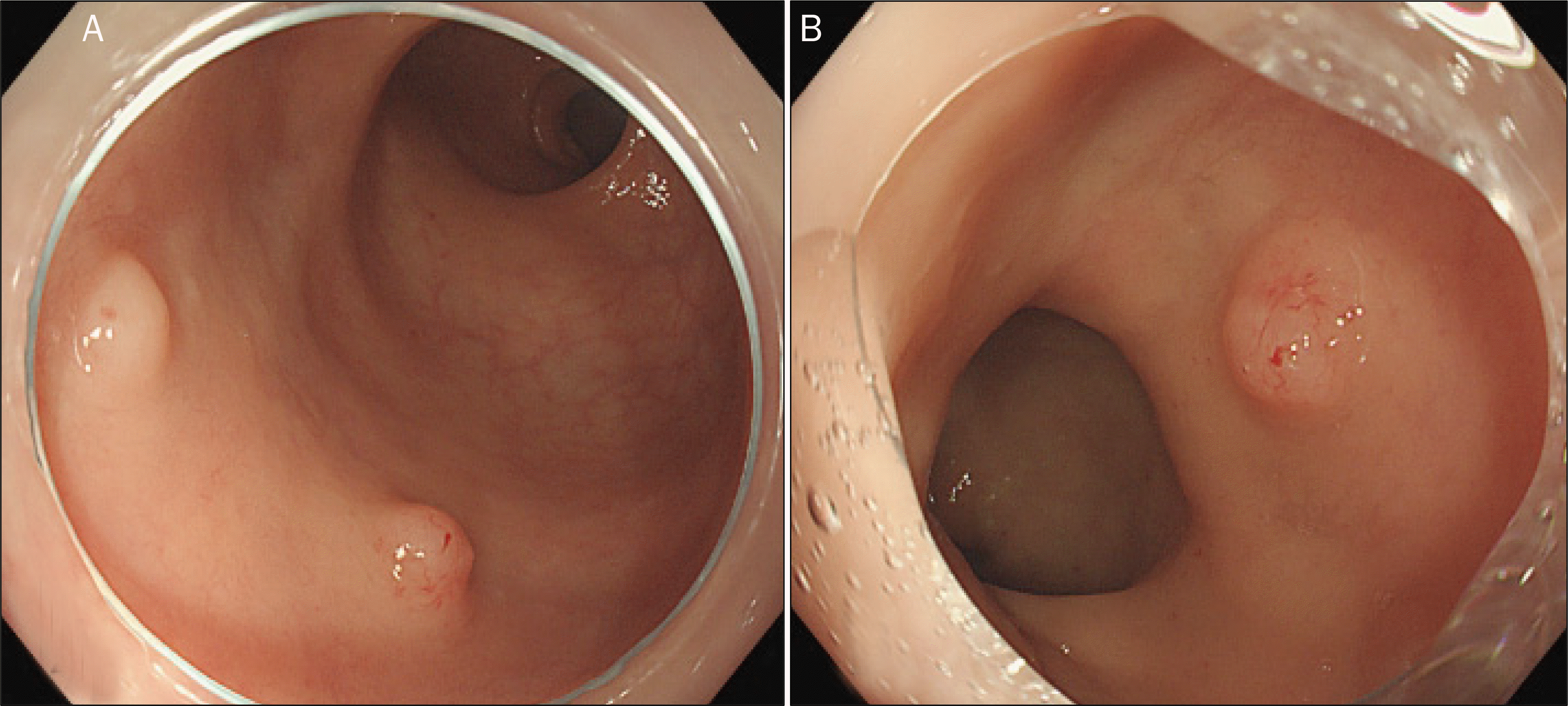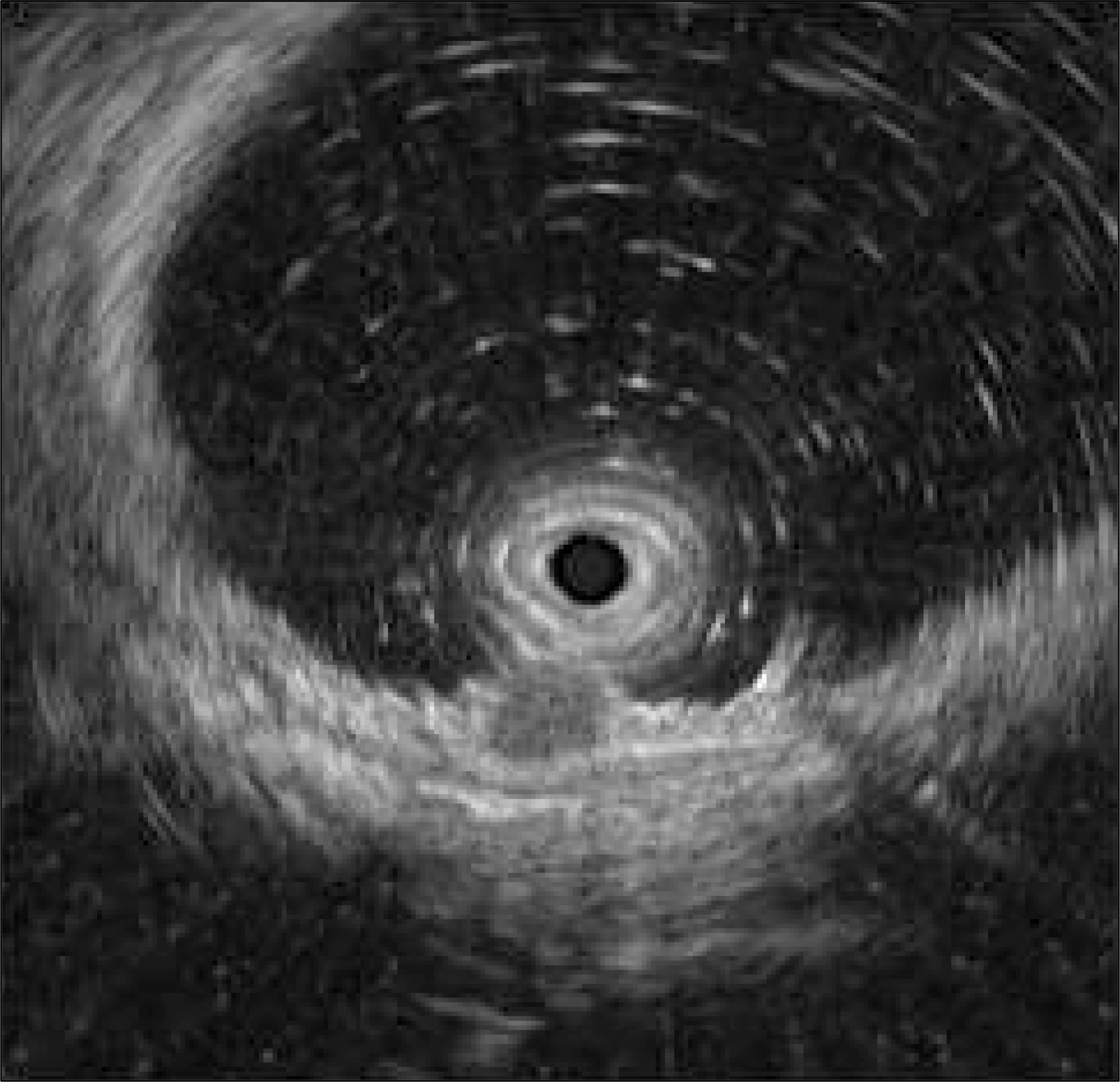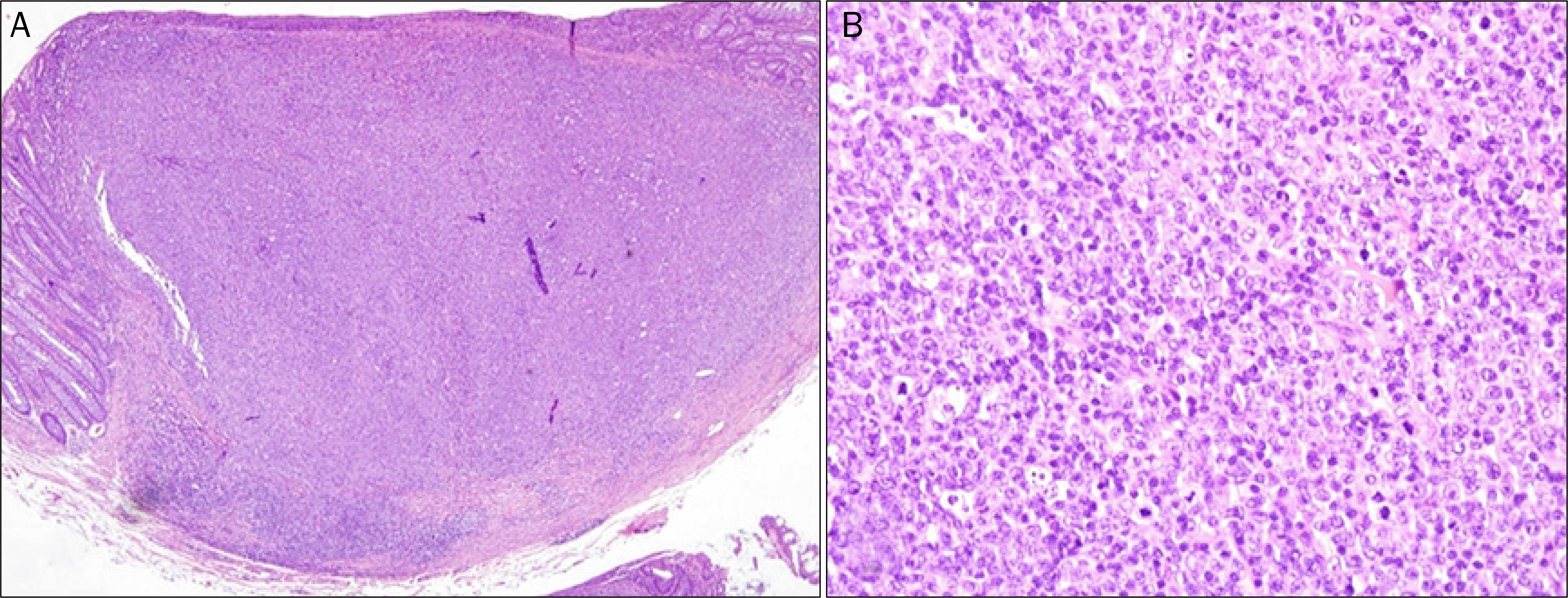Abstract
The gastrointestinal tract is the most common site of extranodal non-Hodgkin lymphoma. However, the incidence of primary rectal lymphoma is extremely rare. Among the primary gastrointestinal lymphomas, follicular lymphoma has been described as a rare disease. It is difficult to diagnose rectal lymphoma due to its variable growth patterns and inadequate biopsies. Majority of patients with rectal lymphoma have nonspecific symptoms or negative biopsies, often delaying the diagnosis. Our patient is a 62-year-old female. Two sessile and smooth subepithelial lesions with a yellowish normal mucosa were found on a screening colonoscopy. The initial mucosal biopsy finding was chronic inflammation, but we were highly suspicion of malignancy; we performed an endoscopic mucosal resection. Herein, we present a rare case of rectal follicular lymphoma diagnosed by endoscopic mucosal resection with a literature review.
References
1. Rudders RA, Ross ME, DeLellis RA. Primary extranodal lymphoma: response to treatment and factors influencing prognosis. Cancer. 1978; 42:406–416.
2. Koch P, del Valle F, Berdel WE, et al. Primary gastrointestinal non-Hodgkin's lymphoma: II. Combined surgical and conservative or conservative management only in localized gastric lymphoma–results of the prospective German Multicenter Study GIT NHL 01/92. J Clin Oncol. 2001; 19:3874–3883.

3. Fan CW, Changchien CR, Wang JY, et al. Primary colorectal lymphoma. Dis Colon Rectum. 2000; 43:1277–1282.

4. Yoshino T, Miyake K, Ichimura K, et al. Increased incidence of follicular lymphoma in the duodenum. Am J Surg Pathol. 2000; 24:688–693.

5. Dawson IM, Cornes JS, Morson BC. Primary malignant lymphoid tumours of the intestinal tract. Report of 37 cases with a study of factors influencing prognosis. Br J Surg. 1961; 49:80–89.

6. Koniaris LG, Drugas G, Katzman PJ, Salloum R. Management of gastrointestinal lymphoma. J Am Coll Surg. 2003; 197:127–141.

7. Shia J, Teruya-Feldstein J, Pan D, et al. Primary follicular lymphoma of the gastrointestinal tract: a clinical and pathologic study of 26 cases. Am J Surg Pathol. 2002; 26:216–224.
8. Kwon BS, Kim CD, Park JY, et al. A case of primary follicular lymphoma arising in the rectum. Korean J Gastrointest Endosc. 2006; 33:285–288.
9. Damaj G, Verkarre V, Delmer A, et al. Primary follicular lymphoma of the gastrointestinal tract: a study of 25 cases and a literature review. Ann Oncol. 2003; 14:623–629.

10. Iwamuro M, Okada H, Takata K, et al. Colorectal Manifestation of Follicular Lymphoma. Intern Med. 2016; 55:1–8.

11. West RB, Warnke RA, Natkunam Y. The usefulness of immunohistochemistry in the diagnosis of follicular lymphoma in bone marrow biopsy specimens. Am J Clin Pathol. 2002; 117:636–643.

12. Hoh CK, Glaspy J, Rosen P, et al. Whole-body FDG-PET imaging for staging of Hodgkin's disease and lymphoma. J Nucl Med. 1997; 38:343–348.
13. Lapela M, Leskinen S, Minn HR, et al. Increased glucose metabolism in untreated non-Hodgkin's lymphoma: a study with positron emission tomography and fluorine-18-fluorodeoxyglucose. Blood. 1995; 86:3522–3527.
Fig. 1.
Colonoscopic findings. (A) 4 mm subepithelial lesion on 3cm from anal verge, 3 mm subepitheliallesion on 2 cm from anal verge. (B) Smooth subepithelial lesion with yellowish colored normal mucosa on 3 cm from anal verge.





 PDF
PDF ePub
ePub Citation
Citation Print
Print





 XML Download
XML Download